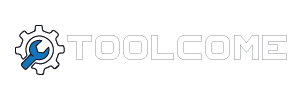Have you ever noticed that horses have eyes on the sides of the head rather than the front, like we do as humans?
The location of horses’ eyes offer a biological advantage that helps keep them safe as prey animals. In fact, eye placement signals whether an animal is a predator or prey. Predators typically have eyes on the front of their heads, while prey animals’ eyes are set to the sides. Since humans have eyes on the front of their faces, they are technically predators in a horse’s world.
“If you think about a tiger or a bird of prey, they have to focus in and target something they’re trying to catch for food,” said Beau Whitaker, an equine veterinarian at Brazos Valley Equine Hospitals in Salado, Texas. “They have minimal blind spots, so they can focus directly on what’s in front of them.”
Horses’ side-set eyes give them a wide field of vision—an advantage when scanning the environment for predators. Although most domestic horses today live in predator-free or low-predator environments, they still process visual information as if their survival depended on it.
How horses see
Because of their eye placement, horses have both monocular and binocular vision. According to the University of California Davis Ophthalmology department, monocular vision is like a panoramic view with each eye viewing about a 200-210-degree arc until a horse raises their head, at which time their field of vision narrows to a binocular view of about 55-80 degrees.
This wide peripheral range of vision allows them to detect subtle movements long before a predator reaches them. Monocular and binocular vision combined gives them close to 350-degree vision around their body. For comparison, humans can see about 180 degrees without turning their heads.
“The biggest thing to know is that horses have a blind spot about four feet in front of them and directly behind them,” Dr. Whitaker explained. “Humans have a tiny blind spot too, that is like a black hole, but our brain fills in what is expected to be there.”
While they have an incredible field of vision, horses process information differently than humans. When you look at an object, both eyes see and process the information at the same time. However, the horse’s eyes process information independently. So, when they see something with their left eye for the first time, even if their right eye has already viewed it, it’s like seeing the same object for the first time.
“The way horses’ eyes connect with the brain means they’re not necessarily learning holistically,” said Dr. Whitaker. “People who work with horses have probably experienced this, where you often have to teach horses something on both sides of their body for them to process the information fully.”
The eyes have it.
Horses have big eyes—the largest of all land mammals, and they have superior night vision compared to humans. Their retinas contain a large number of rods and a unique structure in the eye called the tapetum lucidum. This membrane reflects visible light back through the retina, resulting in excellent night vision and that cool glow-in-the-dark effect. Humans lack this extra layer of tissue, so our night vision isn’t as effective, but our vision in general is clearer.

“Horses generally have good night vision, which gives them the capacity to see long distances and run from a predator,” Dr. Whitaker said. “A horse’s retina has a dazzling, almost iridescent appearance—much more so than in people. That reflective layer helps light bounce back within the eye, enhancing their night vision.”
The horse’s eye structure allows them to detect even slight motion at far distances—a safety advantage as a prey animal—but their vision of objects is only clear about 200 yards away until objects begin to appear blurry.
The way their eyes perceive color is also less sophisticated than in humans. Their dichromatic vision limits them to seeing shades of blue and green with slight variations of those shades, whereas people have trichromatic vision and can also see shades of red and yellow.
Next time you see a horse…
Understanding how horses see can make your next interaction safer for both of you. If a horse feels something touching them without seeing or hearing what it is, their natural fight-or-flight instinct can kick in. Note: Always ask for permission from the person who is handling the horse before approaching if you have not previously established a relationship with the handler or horse owner.
“When you’re around a horse, remember they can’t see directly behind themselves or right in front of themselves,” Dr. Whitaker said. “It’s always best to approach from the side, near their shoulder area, and talk to them to let them know you’re there.”
This story is part of Popular Science’s Ask Us Anything series, where we answer your most outlandish, mind-burning questions, from the ordinary to the off-the-wall. Have something you’ve always wanted to know? Ask us.



